Are LED beauty masks worth the hype? Trendy £500 devices loved by Victoria Beckham, Suki Waterhouse and Nina Dobrev don’t work and are ‘a complete waste of money’, study warns
They are the latest beauty must-have among celebrities including Margot Robbie, Victoria Beckham and Kate Moss.
But research suggests that LED beauty masks, which claim to make skin look younger and firmer, don’t actually work.
These trendy masks look like bizarre devices from a dystopian future. They cost at least £500 and emit red and near-infrared light beams from within.
The light rays are said to stimulate collagen production and blood circulation in the skin, making wearers look younger.
But new research from wellness company Lyma claims they are “biologically ineffective” and a “complete waste of money.”
Victoria Beckham with her mask. The non-invasive treatment combines red and near-infrared light, the two wavelengths work beneath the skin’s surface to stimulate the natural rejuvenation process
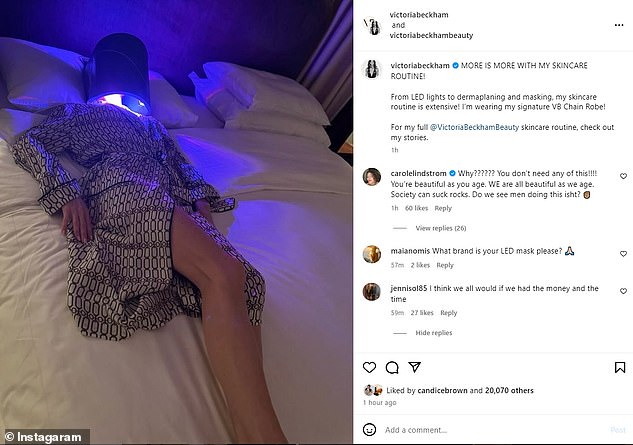
‘More is more with my skincare routine!’: Victoria Beckham looks like a robot from the future in her mask on bed
Lyma’s research shows that light from LED lamps cannot even reach the dermis, the second layer of skin where regeneration takes place.
According to the experts, the masks are “all hype because of the results” and “they light up the room, but not your skin.”
“The at-home beauty device category is full of false promises,” says Lucy Goff, founder of Lyma.
‘Cosmetic devices that are proven to make a difference to the skin are always of clinical quality and are therefore by definition expensive.
‘Unfortunately, it is a fact that cheap plastic devices may look cheap, but in reality they are a complete waste of money.’
In the 1990s, NASA began researching the effects of LEDs on promoting wound healing in astronauts by stimulating cell and tissue growth.
Today, LED lights are being touted in the beauty industry for treating a variety of conditions, from wrinkles, redness and signs of aging to acne, scars and dark spots.
They emit red light that acts on cells in the skin called fibroblasts, which play a role in the production of collagen, the protein responsible for skin hydration and elasticity.
Some devices that emit blue LED light claim to treat acne by reducing the activity of the sebaceous glands, causing them to produce less oil that can clog hair follicles.
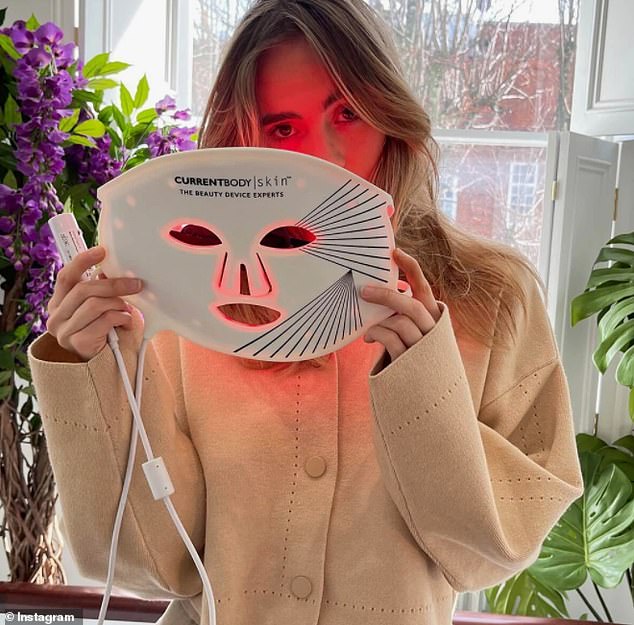
English singer-songwriter and actress Suki Waterhouse is pictured wearing her LED light mask
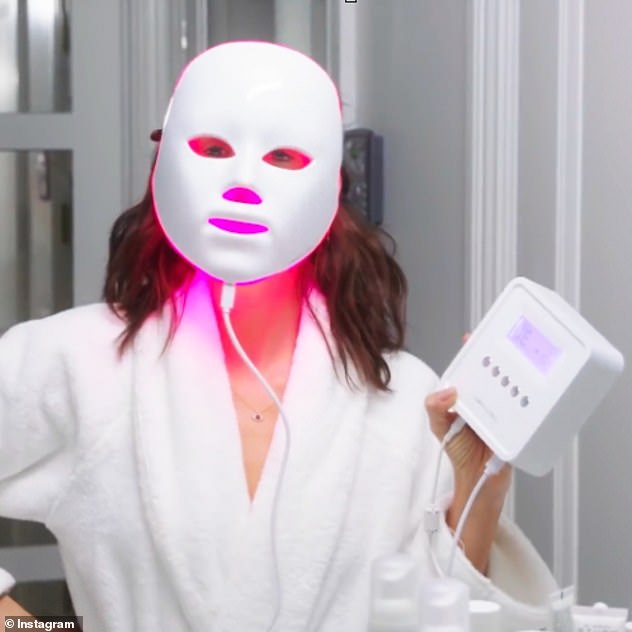
LED lights have been around since the 1960s, but have only recently been used as a skin treatment. Pictured: Nina Dobrev
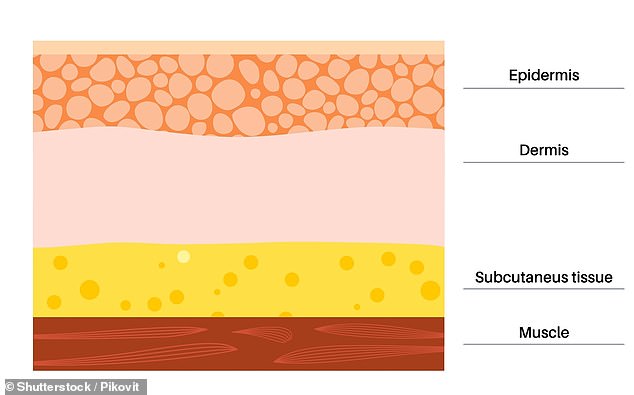
Lyma’s research shows that light from LEDs cannot even reach the dermis, the second layer of skin where regeneration takes place.
But new research shows the hype surrounding it is “highly questionable.”
The researchers claim that the light used in the treatment does not penetrate deeply enough into the skin to produce real changes, compared to laser light.
“When we look at penetration into a very dense medium, such as skin or tissue, we see that LEDs lose their power very quickly,” said Dr Stefan Truppe, a laser scientist at Imperial who was not involved in the research.
‘While a laser can remain focused and collimated over a long distance.
‘Therefore, a laser can direct a large amount of near-infrared light to deep tissues over a large treatment area, compared to LEDs of the same frequency and power.’
For the study, Lyma compared the LED light masks with low-level laser therapy (LLLT), which can penetrate deeper – almost 12 cm.
They tested the effect of both on gene expression in the dermis, which is considered an indicator of skin regeneration.
After exposing skin samples to both types of light for five days, the team found that the laser affected 45 genes, compared to only one gene affected by the LED.
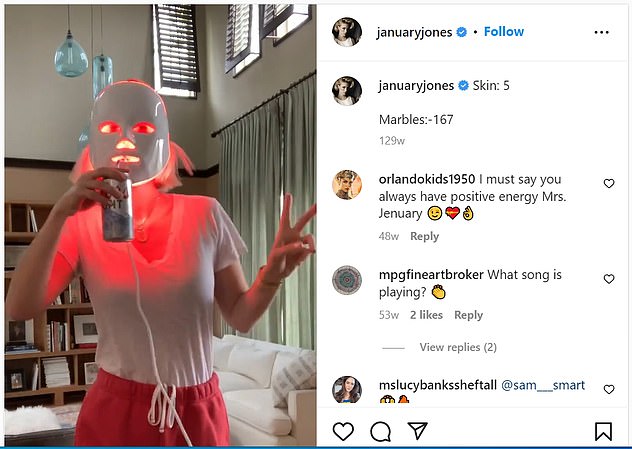
American actress January Jones with her LED mask. Celebrities praise the devices as a way to keep their skin looking young
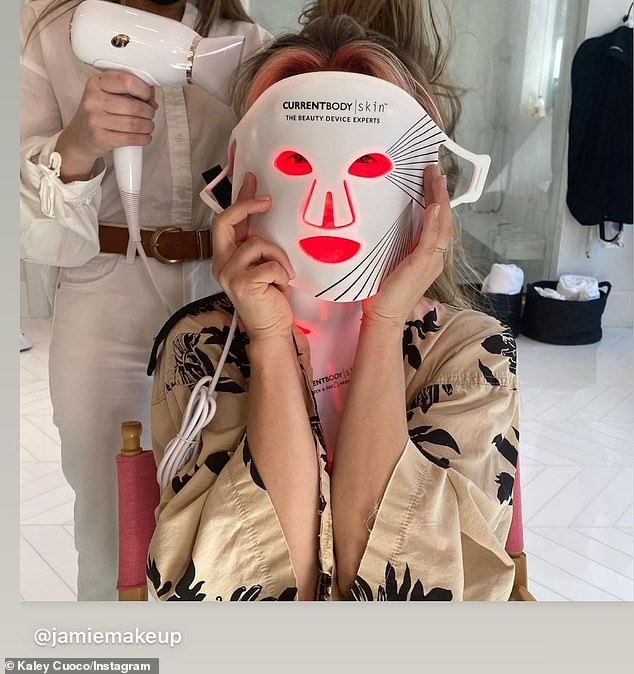
Low level laser therapy is the only light technology that can regenerate the skin in the dermis, contrary to what the cosmetic LED industry claims, according to Lyma. Pictured: Kaley Cuoco
Lyma said in a statement: “This clear difference proves that LED light cannot penetrate the skin and therefore has no biological effectiveness.”
Dr. Graeme Glass, a clinical professor of surgery at Weill Cornell Medical College in New York, called the use of LED masks “highly questionable.”
“The popularity of LED masks, including the various at-home options such as Iron Man-style masks, tanning bed-style shields and wearable wands, is undeniable,” he said.
‘But they are cheap to produce and there is always doubt about how effective they are at the deeper layers of the skin where real change takes place.
‘Our research confirms that only near-infrared laser light alters gene expression in such a way that it leads to visible improvements in the appearance of the skin.
‘Furthermore, these results shed light on the market for LED light therapy-based products, suggesting that the hype used to sell these products is highly questionable.’
